Strength is a skill…and you’ve decided that it’s time to add SFL skills to your toolbox. But you have limited barbell experience and zero access to a coach. Plus, you don’t really want to train wrong. Can you even get ready to attend an instructor certification? This article shows that you can, with two pre-requisites: a solid StrongFirst kettlebell practice and an appreciation that you are always a student. And as a bonus, you’ll get a peek into how Plan Strong guides you along the way.
As a student of strength, the barbell was in my future. However, with a pull-up bar and an arsenal of kettlebells from 8 to 48kg, I was kitted for years of strength skills and gains without “needing” to rush to the bar.
A convenient reality for sure. But truthfully, I was intimidated. The bulk of my barbell experience had come from watching athletes train in my university’s gym, the socially-required pump classes after moving to Dubai, and a few months of practice following my CrossFit Level 1 course. Not much of a resume, I know. And so the SFL hovered at the outskirts of my to-do radar until, every so often, an inspiring social media “sister in strength” renewed my barbell itch.
A Real Quagmire
But how could I train without having learned the exacting technique standards?
What’s better: to train “wrong” (with whatever skills I’d assimilated/cobbled together) or to hold off training until I learned (so I would train the right way, grooving correct and effective patterns while minimizing the risks of injury)? This was a classic chicken vs. egg dilemma (sorry Pavel).
Deciding to do nothing is still a decision—one that wasn’t getting me anywhere and in fact, one that didn’t sit well with the “student” in me. Our code isn’t just words on paper. It is an ethos that we live by and reflects the qualities that differentiate us as StrongFirst. The SFL would complete my “quadfecta”—SFG, SFG II, SFB, and SFL—a leadership requirement and, while still just an idea at the time, would eventually become the highest Certified Instructor designation: StrongFirst Elite. How could I not commit?
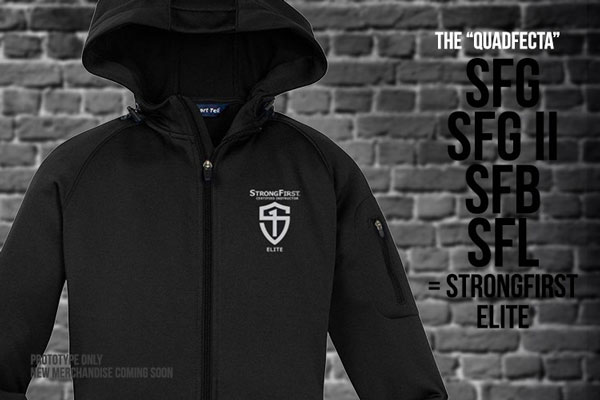
Prepare to Take vs Prepare to Pass
With just over two months to go and not having done any specific training for the tested lifts, I had to rethink “preparation.” That’s when the lightbulb went off: preparing to take a course and preparing to pass it are not the same thing.
Preparing to explore new knowledge and learn new skills doesn’t actually require a mountain of practice prior to showing up. You can’t practice what you don’t know…and with limited exposure to barbells, I didn’t know what I didn’t know, yet. So indeed, my “practice” for the certification would center around being a good student: reviewing my StrongFirst kettlebell principles (i.e. read your manual) and gaining the best understanding of how my body moved, where and when I tended to leak tension, and my go-to compensations.
Preparing to pass the course is a completely different animal. Preparation can come before (provided you have the knowledge), after (learn what you need, practice, then test), or both. So, showing up to the SFL as a relative “newbie” was a perfectly reasonable idea: I didn’t need to pass (I would have six months for that)…I needed to learn.
But a week later, I wondered if I wasn’t missing something…a great learning opportunity for others who may be in a similar situation—kettlebell instructors and enthusiasts wanting to take the SFL but not having enough barbell background to train well. Was it possible to prepare for the SFL lifts using “only” StrongFirst kettlebell principles? And how close to the standards could I get without ever touching a barbell? This idea got me excited. So for the next eight weeks, I set out to find out.
Barbell-less SFL Preparation Plan
Fortunately, my kettlebell background and study of biomechanics were a good foundation from which to analyze each barbell skill’s positions and transitions. Admittedly, I wouldn’t be able to replicate the barbell’s exact loading parameters with kettlebells, but that’s ok. My goal was the “experiment” itself.
The following table outlines the SFL instructor certification lift requirements for a 54kg woman. Next to each is my chosen kettlebell proxy movement. The baseline (last) column represents my starting technical rep maximum (TRM) for the required reps per lift (set after self-assessment).
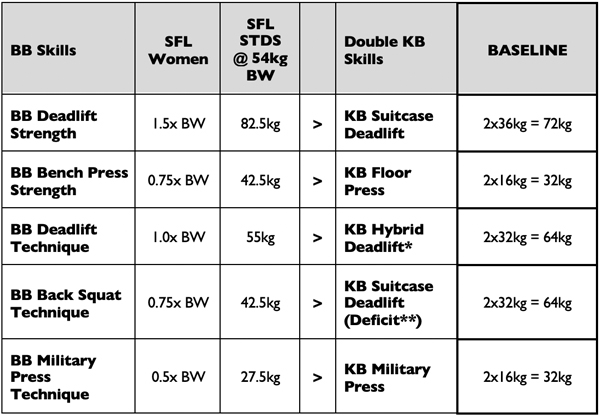
Notes:
* I chose to do a hybrid style deadlift (for technique) to hit my body and grip in a different way than what I’d be experiencing with the suitcase deadlifts. I couldn’t full-on sumo without hip pain and unpleasant grinding, so this hybrid variation—wider than conventional but not full sumo—allowed me to train a mixed grip and hip power in a stance that would support squats, double kettlebell work, and other positions that required external hip rotation and abduction.
** I opted for a kettlebell suitcase deadlift at a deficit (standing on a box, not actually the yoga block from the video) to train back squats. While there isn’t a good kettlebell match for back squats, the deficit let me train with more hip range of motion since the kettlebells could hang below my feet. This is actually a great specialized variety move and similar to a hex bar deadlift.
Apologies for the video blur—my camera seems to have acquired a malfunction. I will reshoot once fixed.
After having mapped out the kettlebell alternatives to each barbell skill, I assessed my movements, looking for blind spots, “cheats,” energy leaks, pattern issues, and strength deficits. Now was not the time to play ostrich and ignore the compensations I’d developed around my hip. (Knowing what I know now, I may not have chased my end-ranges quite so enthusiastically in my youth…but that’s an article for another day.)

Finally, I set my “technical rep” baselines—the loads I could lift for the required reps with good, “technical” form (for several sets and with minimal prep or psyching required). My numbers are in the last column of the table above.
The Need to Prioritize
Without time to spare, I had to focus on my greatest weaknesses:
- Bench Press > KB Floor Press—strength deficit
- Back Squat > KB Suitcase Deadlift at a Deficit for added range of motion—stability, confidence, motor control: right hip
- Deadlift Strength > KB Suitcase Deadlift
Yes, there would be overlap and carry-over between the suitcase deadlift varieties. But because the deadlift strength would be training towards a one rep max and the back squat a set of five repetitions, I adjusted the reps and intensity on different days to shift the focus.
Plan the Work
Knowing that my selected kettlebell moves were only proxies for SFL skills, I eagerly used and sheepishly adapted (please forgive me) Plan Strong™ insights for my purpose. Those of you who are familiar with it will recognize that I didn’t plan a competitive phase. Plus, after having calculated my required number of lifts per intensity and splitting the monthly amount across four weeks (done twice), I was a bit more flexible with my daily volume (while making sure to hit my weekly numbers—not go over or under) across two or three days per week. To the relief of many (and possibly the dismay of others), I won’t got into details behind the brilliance of how Plan Strong fed my training goals. Instead, I’ll make an unashamed plug: take the workshop—your mind will be blown. (Or, if you aren’t quite ready for the science behind it but want training plans to follow, you can get a custom made strength plan designed by a team of experts.) But since I do want this to be helpful to at least one of you, I will go over some information on how I designed my training.
Select the Intensities & Plan the Volume
Using my baselines for the chosen focus lifts and considering the assortment of kettlebells I had available (double kettlebells from 8kg to 48kg, in increments of 2kg up to 28kg), I calculated the relative intensity of different kettlebell pairings. Note my indulgent use of asymmetrical loads to have more “intensities” to work with. Using so many kettlebell options is an unnecessary luxury…and may indeed be overkill.
What follows are tables to demonstrate the inputs for my suitcase deadlift training (for the DL strength test). I’ve put the same tables for my floor press and suitcase deadlift at a deficit at the end of the article for the extra curious.
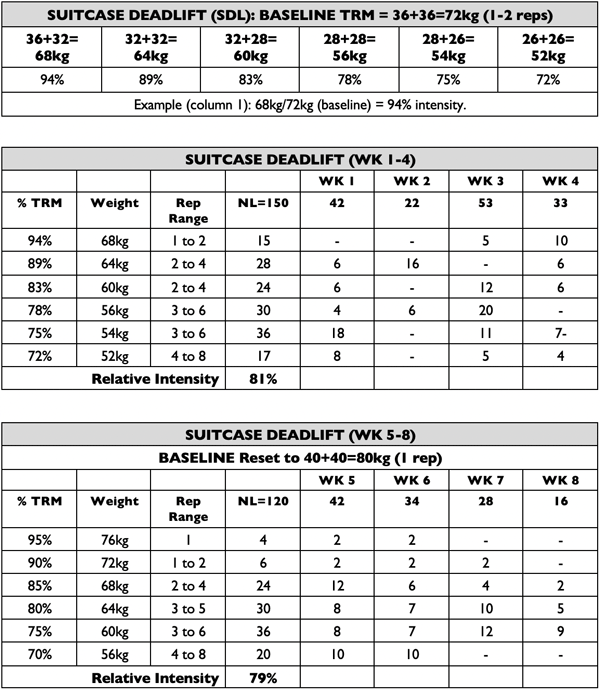
“What does all this mean?” you might be asking. In a nutshell, for my suitcase deadlift, I planned to do 150 total lifts (NL) in the first four weeks. I distributed those lifts across my intensity ranges targeting a relative intensity of 81%. (Trust me, you don’t want me to get into the calculation.) I split those up into the weekly volumes using my chosen Plan Strong variant (a load waviness tool) that had the highest volume on week 3 (to work around my other two focus lifts). All that was left was to split the number of lifts per intensity across weeks to hit the required volume numbers.
When it came splitting weekly volume into daily training sessions, I’d put away my calculator and allowed myself some flexibility, guided by the rep ranges for my sets. For example, in weeks 1 to 4, 89% intensity used 64kg and each set (for that intensity) should range between 2 and 4 reps. I split my volume up as follows:
- WK 1: NL = 6 | 2, 2, 2 (three sets of two reps each)
- WK 2: NL = 16 | 2, 4, 3, 4, 3
- WK 3: NL = 0 | 0
- WK 4: NL = 6 | 4, 2
On weeks with very low volume at a given intensity, I did all of those lifts on my second training day.
You’ll notice that for the second 4-week block, I recalculated my baseline. My 64kg suitcase deadlift was feeling very strong and I knew that it no longer represented 94% of my TRM.
Combining Focus Lifts
Something I haven’t touched on yet is the counterintuitive notion of having more than one “focus” lift. Indeed, I had three. The way I handled them is to use different waviness variants so that every week, I’d have a high training volume (number of lifts) for a different lift. Also, I swapped around the order of my lifts every session. Finally, on some weeks, I separated the two suitcase deadlifts variations so I could better recover. (Thank you Plan Strong for the guidance on this common reality.)
What About the Other Lifts?
This is how I approached my other lifts:
- Military press. Since I could “meet” the standard with my equivalent kettlebell military press, I trained twice a week, on low volume floor press days. Usually doing two ladders 1-5 reps.
- Hybrid deadlift. I used this deadlift as my warmup for the suitcase deadlifts. Dead stop single reps with a 10 second pause (hovering just above the deck) x 5 sets, alternating a mixed grip for four sets.
- And front squat. Leg strength is leg strength. Twice a week, I double laddered—reps and weight. Five reps x 32kg, three reps x 36kg, one rep x 40kg.
Movement Prep
A quick word on warmups. Part of analyzing the SFL skills was identifying potential mobility restrictions that I needed to address with movement prep. It included a lot of wrist mobility (to try to wrap my brain around an unpleasant barbell rack position vs the kettlebell rack), t-spine extensions for the bench press, shoulder flexion without losing midsection bracing, and hip hinging with external rotations.
Check out our Facebook and Instagram social media this week for snippets from this video with audio explanations.
So…Quadfecta?
The SFL certification weekend arrived—I was “newbie” excited: that special mix of nervous anticipation with a pinch of terror.
To review all the mind-blowing knowledge that was presented goes way beyond the scope of this article. Let me just say that anyone who touts themselves as a fan, coach, trainer, or student of strength needs to attend—need, not should. Twenty plus years in the “fit biz” had not given me even 10% of the knowledge I gained that weekend. Whether you are there to learn to train, to train better and safer, and/or to learn to coach your athletes to greater performance and gains, this weekend is for you. And, like me, if you’ve not quite set yourself up with perfect preparation to pass, it’s ok. You’ll come out knowing exactly how to do it better, safer, stronger. (Commercial break over.)
By the end of my SFL experience, I was extremely pleased to have shown that preparing for the certification using only kettlebells wasn’t just a possibility, it was a legit strategy—I had met the standards.
Quadfecta achieved.
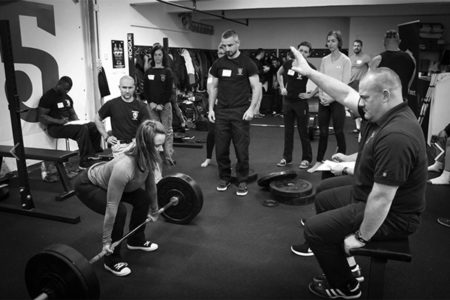
So if you have barbell aspirations but aren’t sure whether you are ready to take the SFL plunge, here’s my advice:
- Never forget to appreciate what it’s like to be a “newbie.” Many of your students start out that way.
- A student of strength should always seek to learn, to challenge his or her biases, and to have more skills and knowledge today than yesterday.
- Different modalities offer valuable lessons to explore loading parameters. That’s how we adapt to withstand them.
- Learning proper technique is the key to longevity. Being strong means so much more than any number you can lift.
- Preparing to be a good student can mean showing up “green” without having prepared to pass. That does not diminish your experience in any way.
For anyone looking for a fantastic summer goal, how about filling your toolbox with new barbell knowledge and skills? We have four SFLs scheduled between now and the end of August just waiting for you.
| Atlanta, GA | July 12-14, 2019 |
| Rijeka, Croatia | July 19-21, 2019 |
| Toronto, Canada | July 26-28, 2019 |
| Portland, OR | August 9-11, 2019 |
Suitcase Deadlift @ Deficit Plan
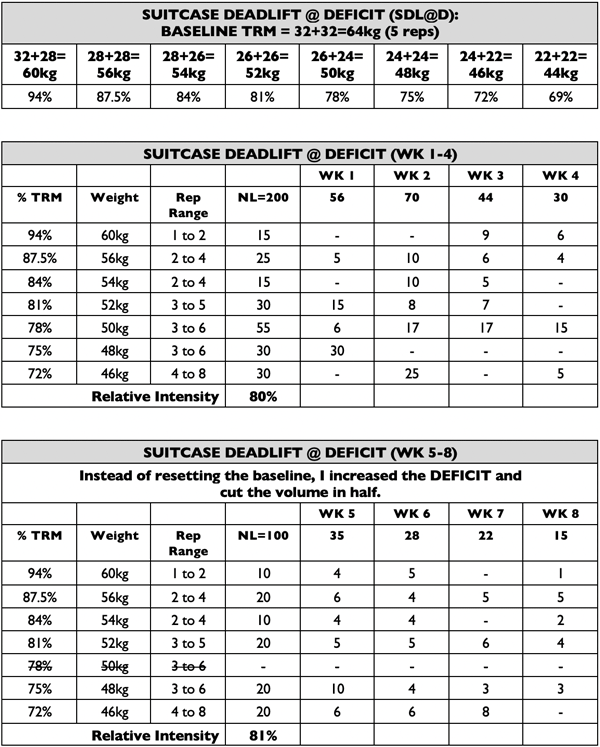
Floor Press Plan
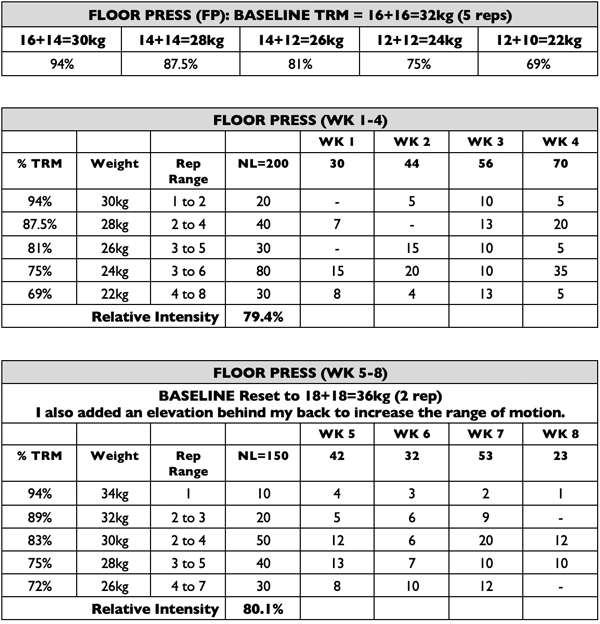
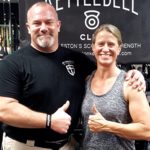
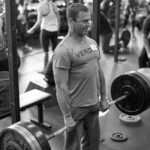
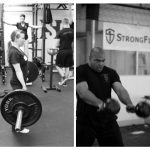
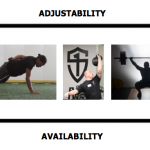

Thanks for reading Molson. Yes, it had seemed ridiculous at first…but then when I got started, I couldn’t believe that I wasted so much time on the “fence.”
Just the article I’m looking for! I was going to save up and buy a power rack to train for the SFL. Instead I might buy some bigger size kettlebells now.
For the DL strength requirement, I weight 65kg (men) so my 2X bodyweight is 130KG (or 290lbs). What size kettlebell would you suggest for the suitecase DL? Alternative I do have access to a barbell and weights (just not a rack) and could train the DL requirements on the barbell.
Thanks!
Thanks for reading Swire and great. You can absolutely start with kettlebells. For you heaviest lift, the strength deadlift, if you have access to a barbell I’d prioritize that without trying to progress too quickly. Using kettlebells, you’d need access to pairs of 56kg & 60kg which aren’t that easy to come by and really are proxies for the real thing. It was always a caveat that a person’s weight and access to sufficiently heavy kettlebells for 90-95% intensity. That said, you can get pretty far with weights under 90%.
Thank you Martine for sharing this! I once had a thought – is doing barbell work without a barbell possible? Seemed ridiculous. Now it’s not!